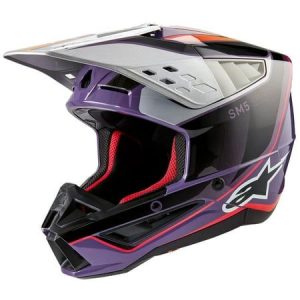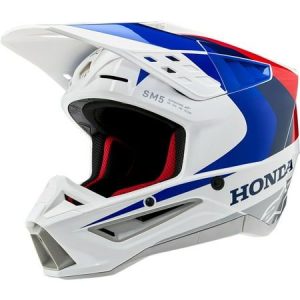Your motorcycle helmet is your primary defense in a crash, so keeping it clean and well-maintained is crucial for both safety and comfort. A dirty helmet can not only obstruct your vision but also harbor bacteria and unpleasant odors. This comprehensive guide delves into everything you need to know about how to clean your motorcycle helmet, from essential tools and techniques to proper care tips.
Demystifying Helmet Parts: Removable vs. Non-Removable Liners
The first step to cleaning your helmet effectively involves understanding its components. Most helmets come with removable liners, which makes cleaning significantly easier. Here’s a quick breakdown:

- Removable Liners: These liners are typically made of fabric and are designed to be taken out for washing. They often have cheek pads, a crown pad, and a neck roll.
- Non-Removable Liners: Some helmets, particularly budget-friendly options, have liners that are permanently attached to the helmet shell. While cleaning these helmets requires more care, it’s still achievable with the right techniques.
Consult your helmet’s owner’s manual to determine the type of liner it has and for specific cleaning instructions provided by the manufacturer.
Gathering Your Cleaning Arsenal: Essential Tools and Products
Before diving into the cleaning process, ensure you have the necessary tools and products on hand:
- Mild Shampoo or Laundry Detergent: Opt for a gentle shampoo or laundry detergent that’s safe for fabrics. Avoid harsh chemicals or detergents that could damage the liner.
- Warm Water: Fill a basin or sink with warm water for soaking the liner.
- Microfiber Cloths: Microfiber cloths are ideal for cleaning the helmet shell and visor without causing scratches.
- Soft Bristled Brush: A soft-bristled brush can be helpful for scrubbing stubborn grime on the helmet shell or liner.
- Helmet Cleaning Spray (Optional): Consider a dedicated motorcycle helmet cleaning spray for a more thorough clean. However, a mild shampoo usually suffices.
Never use abrasive cleaning products, ammonia-based cleaners, or window cleaners on your helmet. These can damage the visor and compromise its clarity or protective properties.
Step-by-Step Guide: Cleaning Your Motorcycle Helmet
Now that you’re equipped with the right tools, let’s walk through the cleaning process:

1. Removing the Liner (if applicable): For helmets with removable liners, carefully detach the cheek pads, crown pad, and neck roll following the manufacturer’s instructions.
2. Pre-Cleaning the Liner (Optional): If the liner has visible dirt or dust, you can use a soft bristled brush to loosen debris before soaking.
3. Soaking the Liner: Submerge the liner components (cheek pads, crown pad, and neck roll) in the basin of warm water with your chosen cleaning agent. Let them soak for 15-20 minutes to loosen sweat, grime, and road dust.
4. Gentle Hand Wash: Gently hand wash the liner components using your fingers or a soft cloth. Avoid using harsh scrubbing motions that could damage the fabric.
5. Rinsing: Thoroughly rinse the liner components with clean water to remove all soap residue. You may need to repeat the rinsing process a few times to ensure all soap is gone.
6. Drying the Liner: Never put your helmet liner in the dryer or expose it to direct sunlight for drying. Instead, lay the washed liner components flat on a clean towel or drying rack in a well-ventilated area. Allow them to air dry completely before re-installing them in the helmet.
7. Cleaning the Helmet Shell: While the liner soaks, use a damp microfiber cloth to wipe down the helmet shell. For stubborn grime, you can use a mild cleaning solution or a dedicated helmet cleaning spray.
- Visor Cleaning: Pay particular attention to the visor, cleaning both the inside and outside surfaces with a microfiber cloth and warm water. Avoid using paper towels or abrasive cloths that can scratch the visor.
- Vents and Padding: Use a cotton swab dipped in warm water to clean any dust or debris trapped in the helmet’s vents and padding around the chin bar.
8. Reassembly: Once the liner components are completely dry, carefully re-install them back into the helmet shell.
It’s always best to err on the side of caution and avoid using excessive amounts of water or cleaning products, especially on the helmet shell and visor.
Extra TLC: Deep Cleaning and Deodorizing
For a deeper clean or to eliminate stubborn odors, consider these additional tips:

- Deep Cleaning Soak: For heavily soiled liners, you can extend the soaking time to 30 minutes or use a disinfectant solution suitable for helmet liners (check the manufacturer’s recommendations). Always follow up with thorough rinsing.
- Vinegar Rinse: For lingering odors, add a cup of white vinegar to the final rinse water. Vinegar has natural deodorizing properties and can help neutralize sweat smells.
- Baking Soda Treatment: If your helmet still has a faint odor after washing, sprinkle baking soda on the liner components and leave it for an hour before brushing it off. Baking soda absorbs odors and leaves a fresh scent.
Avoid using bleach, fabric softeners, or harsh stain removers on your helmet liner, as these can damage the fabric and compromise its integrity.
Maintaining Your Motorcycle Helmet for Long-Lasting Performance
Regular cleaning is crucial, but proper helmet care goes beyond just washing. Here are some additional tips to extend the lifespan and performance of your helmet:
- Store Your Helmet Properly: When not in use, store your helmet in a cool, dry place away from direct sunlight. Excessive heat can damage the helmet shell and liner materials.
- Air Out Your Helmet Regularly: After each ride, especially on hot days, allow your helmet to air out completely to prevent moisture build-up and the growth of bacteria.
- Visor Care: Clean your visor regularly and avoid touching it with your fingers as oils from your skin can attract dirt and impair visibility. Consider using a dedicated anti-fog treatment on the visor’s inner surface to prevent fogging during rides.
- Inspect for Damage: Regularly inspect your helmet for any signs of damage, such as cracks in the shell, scratches on the visor, or loose components. If you find any damage, it’s crucial to replace your helmet for optimal safety.
A well-maintained helmet not only looks good but also provides the necessary protection in the event of an accident. Don’t wait for your helmet to become excessively dirty or worn before taking proper care of it.
Investing in Safety and Comfort: Choose the Right Cleaning Products
Now that you’re armed with a comprehensive helmet cleaning guide, you might be wondering about the best cleaning products to use. Here’s a breakdown of some popular options:

- Mild Shampoo or Laundry Detergent: A gentle, unscented baby shampoo or laundry detergent is often a perfectly suitable choice for cleaning your helmet liner. Look for formulas that are free of harsh chemicals or dyes.
- Dedicated Helmet Cleaning Sprays: Several motorcycle gear manufacturers offer helmet cleaning sprays specifically formulated for cleaning helmet shells and visors. These sprays are convenient and often come with anti-fogging properties.
- Microfiber Cloths: Investing in high-quality microfiber cloths is essential for cleaning your helmet without causing scratches. Microfiber cloths are soft, absorbent, and won’t leave behind any lint.
Check your local motorcycle gear store or online retailers for a variety of helmet cleaning products. Look for brands with a reputation for quality and choose products specifically designed for motorcycle helmets.
The Importance of a Clean Motorcycle Helmet: Ride with Confidence and Clarity
Maintaining a clean helmet goes beyond aesthetics. Here are some key reasons why regular cleaning is essential:

- Improved Visibility: A dirty visor can obscure your vision, especially at night or in low-light conditions. Regular cleaning ensures optimal clarity for safe riding.
- Enhanced Comfort: A clean and sweat-free helmet liner provides a more comfortable riding experience, especially during long journeys.
- Reduced Odors: Regular cleaning helps prevent the build-up of sweat and bacteria, which can lead to unpleasant odors in your helmet.
- Extended Helmet Lifespan: Proper care and cleaning help preserve the materials of your helmet, extending its lifespan and maximizing your investment.
By following these simple cleaning and maintenance tips, you can ensure your motorcycle helmet remains functional, comfortable, and safe for many rides to come.


